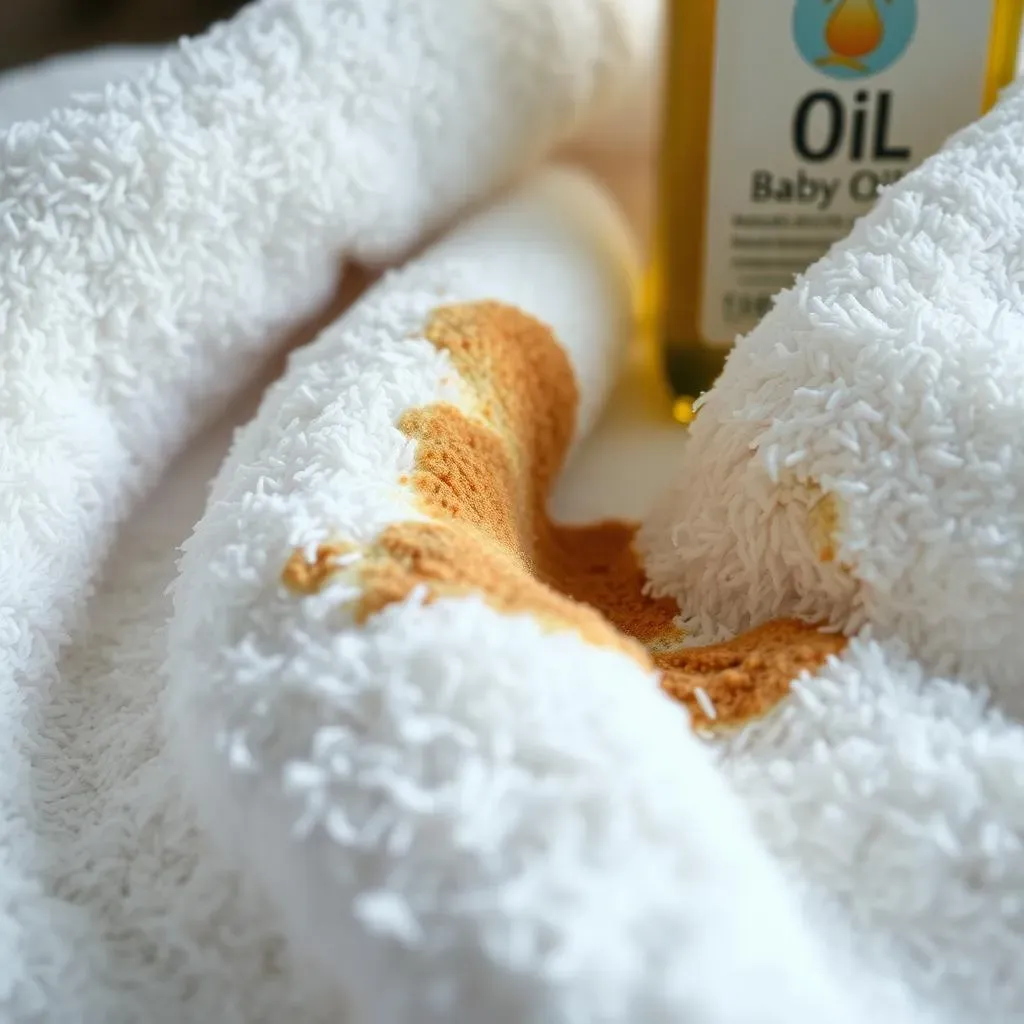Table of Contents
Ever reached for a towel after using baby oil, only to wonder, "Does baby oil stain towels?" It's a common concern. While baby oil is fantastic for moisturizing skin, its oily nature can leave unsightly marks on your favorite linens. But don't toss those towels just yet! This guide is your go-to resource for understanding why baby oil stains happen and, more importantly, how to get rid of them.
Understanding Baby Oil and Its Potential to Stain Towels
Understanding Baby Oil and Its Potential to Stain Towels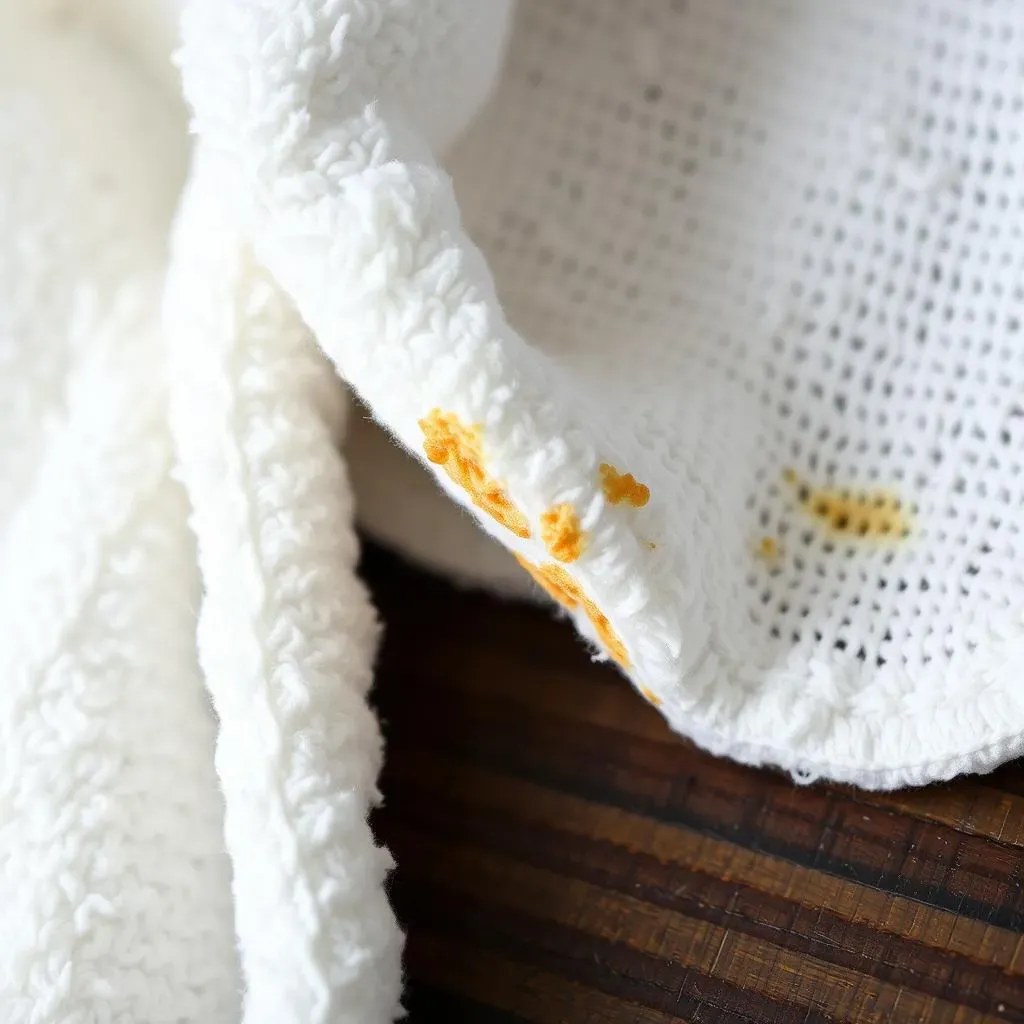
What is Baby Oil Anyway?
Baby oil, typically a form of mineral oil with added fragrance, is designed to be gentle on delicate skin. Its primary purpose is to lock in moisture, leaving skin feeling soft and smooth. Because it's an oil-based product, it's prone to leaving residue wherever it goes, especially on absorbent materials like towels.
Unlike water-based lotions that evaporate more easily, baby oil clings to fibers, making it a bit more challenging to remove. This is the first step in understanding why baby oil and towels might not be the best mix, especially if you're aiming for pristine whites.
The Absorbent Nature of Towels
Towels are designed to soak up moisture, which is great for drying off after a shower. However, this absorbency also means they readily grab onto oils and other liquids, including baby oil. The fibers of a towel act like tiny traps, holding onto the oil and preventing it from easily washing away.
The type of towel also matters. Thicker, plusher towels with longer loops have more surface area and are more likely to trap oil than thinner, less absorbent ones. Think about it – that luxurious bath towel is also a magnet for baby oil stains.
Color and Fabric Composition Matters
The color of your towels plays a role in how noticeable a baby oil stain will be. On white towels, the stain may appear as a darker, greasy spot. Colored towels might mask the stain initially, but the oil can still affect the fabric over time, potentially leading to discoloration or a change in texture.
Furthermore, the type of fabric influences how easily baby oil stains. Natural fibers like cotton are more absorbent than synthetic fibers, meaning they're more prone to trapping the oil. A cotton towel will likely show a stain more readily than a microfiber one.
Towel Characteristic | Impact on Staining |
|---|---|
Color (White) | Stain is highly visible |
Color (Dark) | Stain may be masked initially |
Fabric (Cotton) | More absorbent, stains easily |
Fabric (Microfiber) | Less absorbent, resists stains |
Why Baby Oil Stains Towels: The Science Behind the Residue
Why Baby Oil Stains Towels: The Science Behind the Residue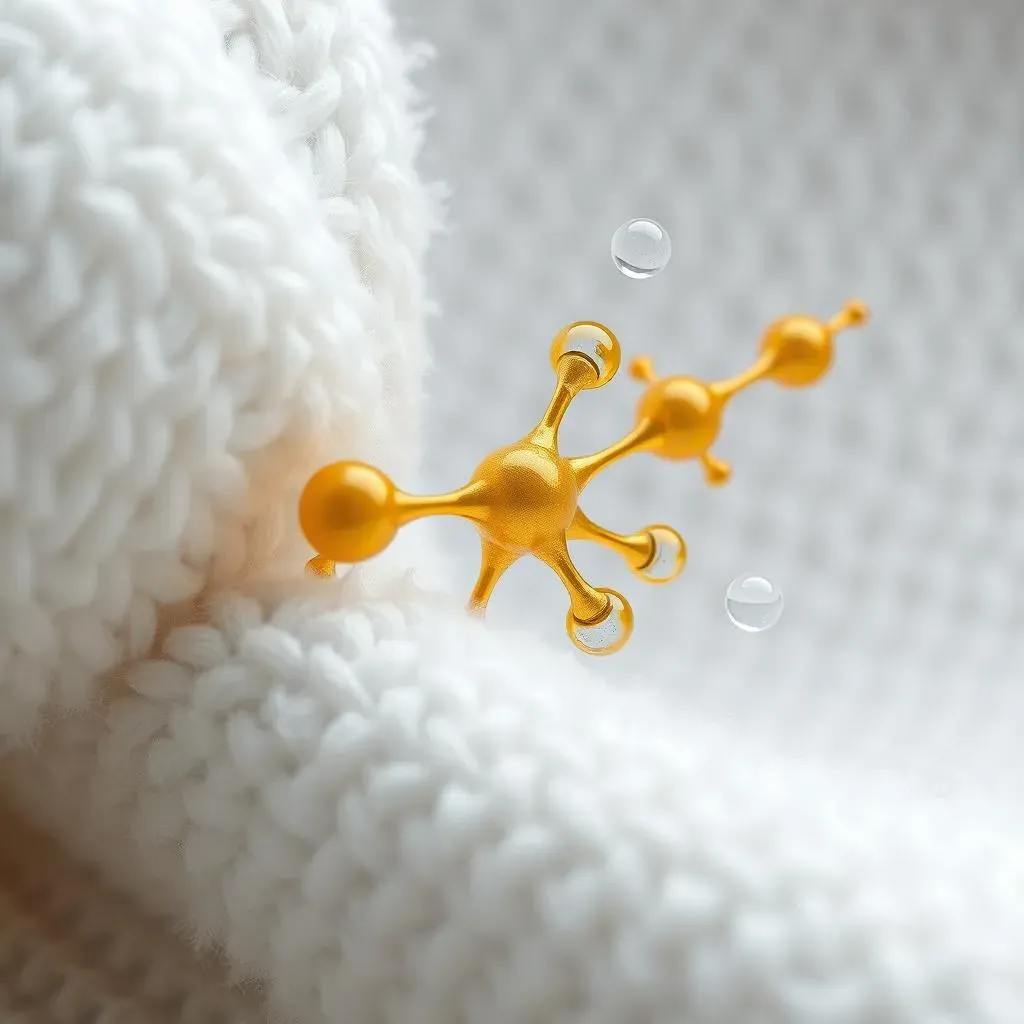
Alright, let's dive into the nitty-gritty of why baby oil stains towels. It's not just about the oil being, well, oily. The real issue lies in its molecular structure and how it interacts with fabric fibers. Baby oil, being a mineral oil, is composed of long hydrocarbon chains. These chains are non-polar, meaning they don't play well with water, which is polar. This is why oil and water separate – they simply don't mix at a molecular level.
When baby oil comes into contact with a towel, these non-polar hydrocarbon chains are attracted to other non-polar substances, like the natural oils present in cotton fibers. This attraction causes the oil to bind tightly to the fabric, making it difficult for water alone to wash it away. It's like the oil is embedding itself into the towel's very structure, creating a stubborn residue that just won't budge without a little extra effort.
StepbyStep Guide: Removing Fresh Baby Oil Stains from Towels
StepbyStep Guide: Removing Fresh Baby Oil Stains from Towels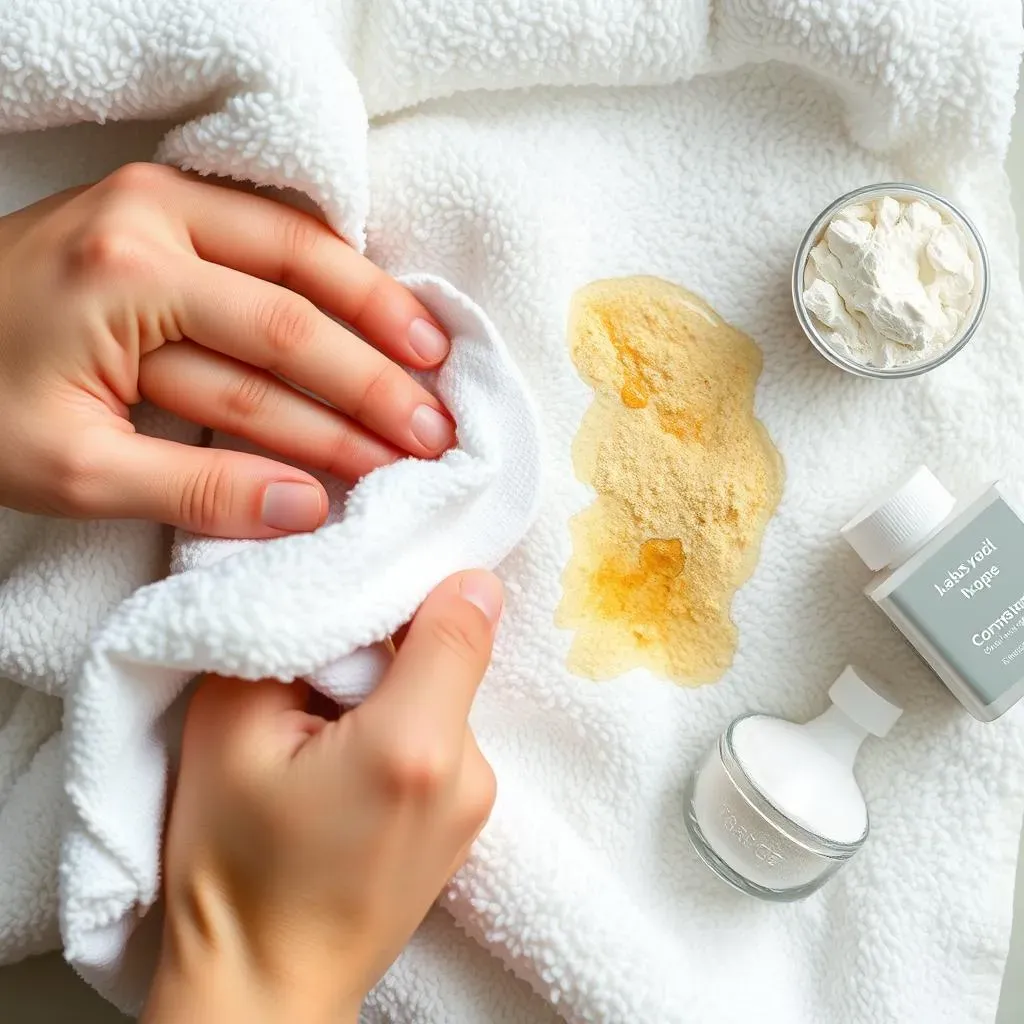
Act Fast: The Key to Success
Time is of the essence when it comes to fresh baby oil stains. The sooner you tackle the spill, the easier it will be to remove. Baby oil has a knack for embedding itself deep within the fibers of your towel, so swift action is crucial. Don't let it sit and settle – jump into action right away!
Step 1: Blot, Don't Rub!
Grab a clean, dry cloth or paper towel and gently blot the affected area. Avoid rubbing, as this can spread the oil and make the stain larger and more difficult to remove. The goal here is to absorb as much of the excess oil as possible before it has a chance to penetrate deeper into the fabric. Think of it like soaking up a spill – gentle and deliberate.
Step 2: Apply Absorbent Powder
Generously sprinkle the stained area with an absorbent powder. Cornstarch, baking soda, or even talcum powder work wonders. These powders help to draw the oil out of the fabric. Let the powder sit on the stain for at least 30 minutes, or even longer for larger spills. The longer it sits, the more oil it will absorb. This is like giving the powder a chance to work its magic.
Step 3: Vacuum or Brush Away the Powder
Once the powder has had ample time to absorb the oil, vacuum it up using a hose attachment. If you don't have a vacuum, a soft brush will also do the trick. Be gentle to avoid damaging the towel fibers. You'll likely see that the powder has clumped together, indicating that it has absorbed the oil. This is a good sign that you're on the right track.
Step 4: Pretreat with Dish Soap
Apply a small amount of liquid dish soap directly to the stained area. Dish soap is designed to cut through grease and oil, making it an effective stain remover. Gently rub the dish soap into the fabric using your fingers or a soft brush. Be sure to work the soap into the fibers, but avoid being too rough. Let the soap sit for about 5-10 minutes to allow it to break down the oil.
Step | Action | Purpose |
|---|---|---|
1 | Blot the stain | Remove excess oil |
2 | Apply absorbent powder | Draw oil from fabric |
3 | Vacuum or brush away powder | Remove oil-soaked powder |
4 | Pretreat with dish soap | Cut through remaining grease |
Step 5: Wash as Usual
Launder the towel as usual, following the care instructions on the label. Use warm water and a good-quality laundry detergent. Before placing the towel in the dryer, check to see if the stain is gone. If it's still visible, repeat the pretreatment process before drying. Drying a stained towel can set the stain, making it much harder to remove later.
Step 6: Air Dry if Necessary
If the stain persists after washing, air dry the towel instead of putting it in the dryer. The heat from the dryer can cause the stain to set permanently. Air drying allows you to retreat the stain if necessary. Once the towel is completely dry, assess the stain and repeat the steps above if needed. Patience is key here – sometimes it takes a few tries to fully remove a baby oil stain.
Tackling Stubborn Stains: How to Remove Old Baby Oil Stains from Towels
Tackling Stubborn Stains: How to Remove Old Baby Oil Stains from Towels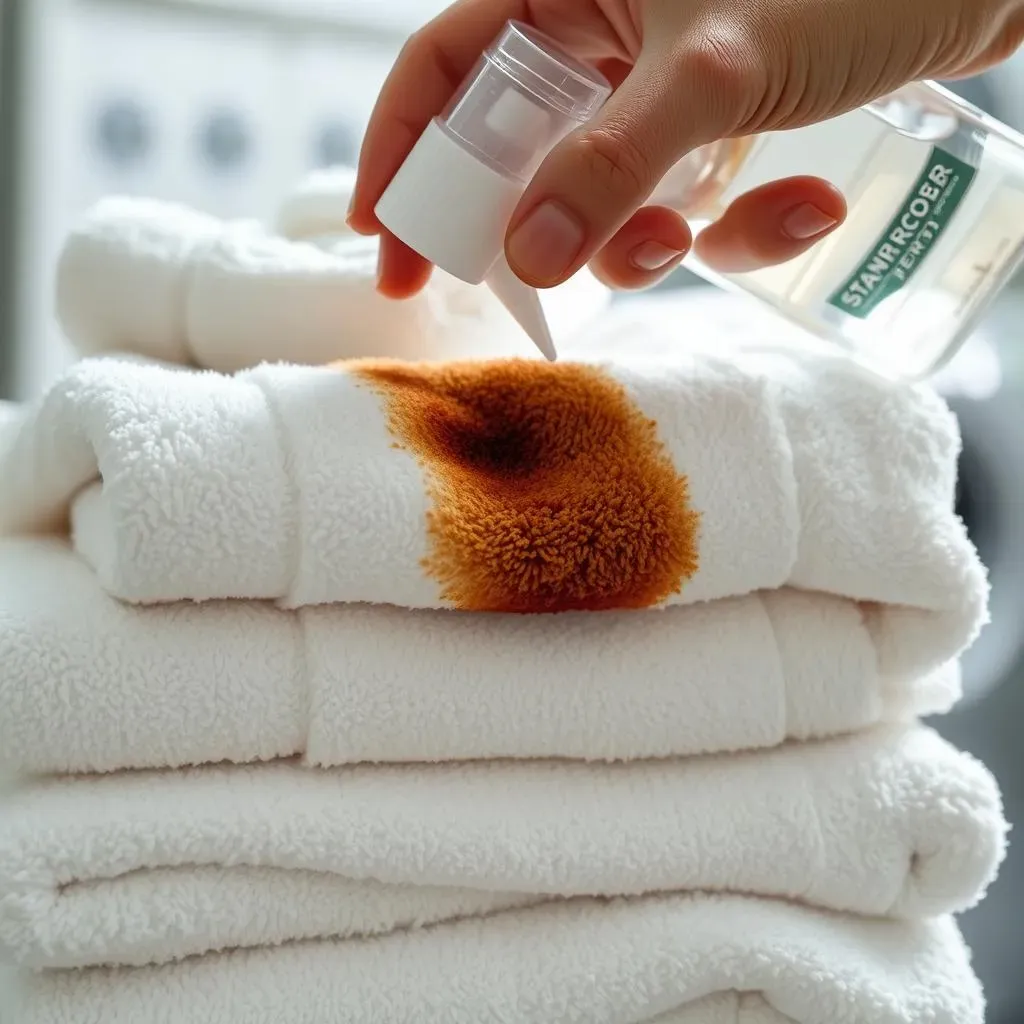
The Challenges of Old Baby Oil Stains
so you've discovered a baby oil stain that's been hanging around for a while. Don't beat yourself up – it happens! But be warned: old stains are tougher to tackle because the oil has had more time to bond with the fabric fibers. It's like it's set up camp and doesn't want to leave. The good news is, with the right approach, you can still evict those stubborn stains.
The key here is patience and persistence. You might need to repeat the cleaning process several times to fully remove the stain. Think of it as a marathon, not a sprint. And remember, avoid using heat until you're sure the stain is gone, as heat can permanently set the stain.
Boosting Your Stain-Fighting Arsenal
When dealing with old baby oil stains, you might need to bring in the big guns. While dish soap and absorbent powders are great for fresh stains, older stains often require a more powerful approach. This is where stain removers, vinegar, and even a little bit of heat (used cautiously!) can come into play.
Consider using a stain remover specifically designed for oil-based stains. These products contain enzymes that break down the oil molecules, making them easier to wash away. Alternatively, you can try soaking the towel in a solution of vinegar and water, which can help to loosen the oil's grip on the fabric. Just be sure to test any cleaning solution on a small, inconspicuous area of the towel first to ensure it doesn't cause discoloration.
Cleaning Agent | Use Case | Caution |
|---|---|---|
Stain Remover (Oil-Based) | Stubborn, set-in stains | Test on a small area first |
Vinegar and Water Solution | Loosening oil's grip | Dilute vinegar properly |
Baking Soda Paste | Extra absorbent power | Can be abrasive on delicate fabrics |
Preventing Baby Oil Stains on Towels: Tips and Tricks
Preventing Baby Oil Stains on Towels: Tips and Tricks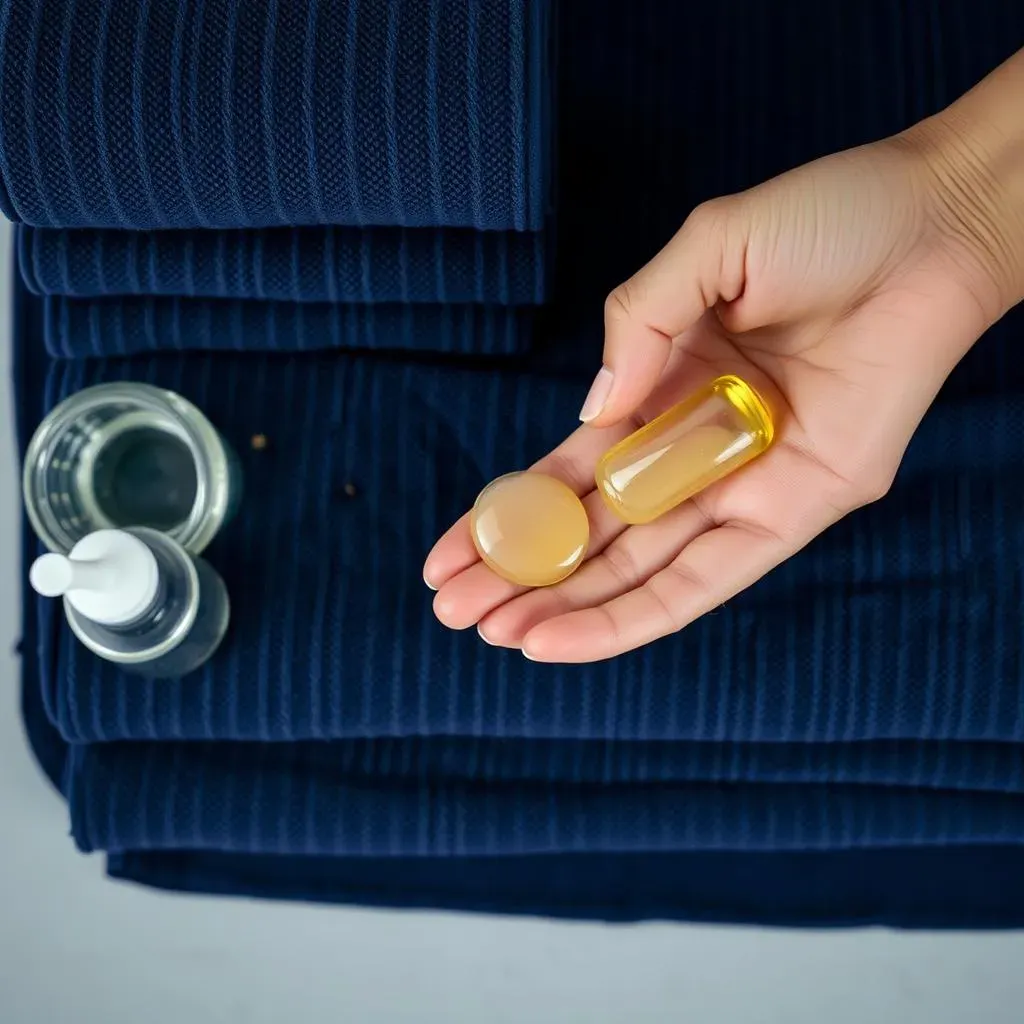
The Barrier Method: Towel Placement
Let's face it, accidents happen. But you can minimize the risk of baby oil stains by being strategic about where you place your towel. Instead of slathering on the oil and then blindly reaching for the nearest towel, designate a specific "oil-only" towel. Keep it separate from your regular drying towels and use it exclusively for wiping off excess oil. This simple step can save your good towels from becoming stained casualties.
Consider laying down the designated towel *before* you even apply the oil. This creates a barrier between your skin and any nearby surfaces, including your good towels. It's like creating a safe zone for your oil application process. Think of it as a preventative measure, similar to using a placemat to protect your dining table.
Application Techniques: Less is More
Sometimes, the best way to prevent stains is to simply use less product. Instead of applying a generous amount of baby oil all at once, start with a small amount and gradually add more as needed. This gives you more control over the application process and reduces the likelihood of excess oil transferring to your towel. It's like seasoning food – you can always add more, but you can't take it away!
Another helpful technique is to massage the oil into your skin thoroughly. The more the oil is absorbed, the less there is to transfer to your towel. Take your time and really work the oil into your skin, focusing on areas that tend to be drier. This not only helps to prevent stains but also maximizes the moisturizing benefits of the oil.
Tip | Description | Benefit |
|---|---|---|
Designated Oil Towel | Use a specific towel for oil only | Protects other towels from stains |
Apply Less Oil | Start with a small amount | Reduces excess oil transfer |
Massage Thoroughly | Work oil into skin | Increases absorption |
Towel Choice Matters: Opt for Dark Colors
While it might not be the most aesthetically pleasing option, choosing darker-colored towels can significantly reduce the visibility of baby oil stains. Dark colors like navy blue, charcoal gray, or even black can effectively camouflage oil stains, making them less noticeable. This is especially helpful if you're prone to accidental spills or if you simply don't have the time to meticulously remove every trace of oil.
Alternatively, consider using microfiber towels instead of traditional cotton towels. Microfiber is less absorbent than cotton, meaning it's less likely to trap oil. Plus, microfiber is often easier to clean and more resistant to staining. It's like choosing a stain-resistant fabric for your furniture – it's a practical choice that can save you a lot of hassle in the long run.
Conclusion: Towel Triumph Over Baby Oil Stains
So, does baby oil stain towels? Yes, it can, but it doesn't have to be a permanent problem. With the right techniques and a little patience, you can successfully remove baby oil stains and keep your towels looking fresh and clean. Remember, acting fast on fresh stains is key, and don't be afraid to try multiple methods for stubborn marks. By following the tips and tricks outlined in this guide, you can confidently tackle any baby oil mishap and maintain the quality and appearance of your beloved towels.
